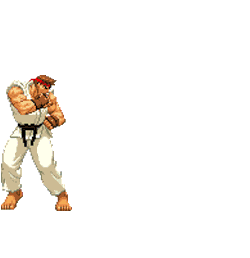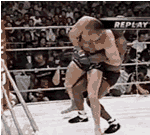|
|
Post by Dan on May 29, 2007 14:17:01 GMT
Here are the titles of the book i plan on writting
if anyone wants to help with any of it let me know.
[glow=red,2,300]‘The notes of a Wing Chun practitioner’[/glow]
Abstract
Acknowledgements
Preface
Contents
Introduction
About Wing Chun
The Aims of the Book
History
Written history
About Ip Man and why he made WC good
Ip Man’s Code of Conduct
Family Tree
The Learning Process
The four stages of development
Principle Vs Technique – Use sayings on Ip Man chops and Wong Shun Leung Quotes
The Key principles of Wing Chun
The Basics
Centerline
The guard
Punching - turning and chain punching
Palm strikes
Gates and zones
Theory of Blocking – deflection non collision of force
Basic Kicking
The Stances and Steping
Introduction
Why stagger the learning of stepping?
The important principles behind stepping
Sil Lim Tao Ma – training stance
Biu Ma – thrusting stepping
Big Ma – Jamming stepping
Huen Ma – Circle Stepping
Bart Jam Dao stepping – Confident power stepping
The Forms
Introduction to the forms and personal development
Sil Lim Tao
Introduction
The Form
Applications
Variations and common mistakes
Chum Kiu
Introduction
The Form
Applications
Variations and common mistakes
Biu Gee
Introduction
The Form
Applications
Variations and common mistakes
Mok Jang Jong
Introduction
How to train on the Jong – the stages of training
The Form
Applications
Variations and common mistakes
Dummy Plans
Fighting Theory
Dealing with Fakes
Using your 45 Biu Ma + Biu Sao
Using your Huen Ma and slight Huen Ma
Situation training
Body language
Speech
Modified guard and use of positioning
The mind; your greatest ally or greatest weakness.
Weapons defence – Knife and Bat
Crocodile striking
Defence from Sitting
Fan Sao
Kick defence
Entry Techniques
Pak Sao and punch
Mann Sao
Lan Sao
Double high Gan Sao
Turning Tan Sao and punch
Using kicks to enter
Multiple attackers
Two attackers
Three or more attackers
Being surrounded and punching out of the circle
Kicking and sweeping
The 8 kicks of Wing Chun
Developing power in kicks
Defensive Kicks
Bong Gerk
Tan Gerk
Pak Gerk
The Physics and Biology of Strikes
Bone alignment
In a vertical fist punch and horizontal fist punches
In the different palm strikes
In kicks
Statistical data
Data from different strikes and different technique
Like when twisting punch one way or the other
Which does more damage?
Is it internal or impact damage?
Conclude section with what are the best/most powerful striking methods
Chi Sao
Introduction
Dan Chi and the basics
Positioning
Articles
List of attacks
How to defend
Different rolling methods and trickery
Break away Chi Sao
Development of Fan Sao
Wing Chun Weapons
Introduction
Lok Dim Bune Gwan – pole form
Intro
Form
Applications
Bart Jam Dao – Butterfly knife form
Intro
Form
Applications
Important concepts and other articles
Ging
Fan Sao
Use your Yiu Ma
Two way energy
Last second energy
Dim Mak – Fact or Fiction – the ideas of Popper
One inch punch or one inch push
Movement at the last section
Looking open to provoke certain attacks
Ground fighting positions – using you Wing Chun in different ways
Philosophical distinctions between power and violence - Arendt
Wall bag training
Intro
The basics
Dit Da Jow
Iron Palm
Furthering your development
Simple Self Defence
Prevention rather than cure
Grab defence
Normal grabs
Against a wall
Take Down defence
For shoot and rugby tackle
Drills
Glossary of Techniques
Detailed explanation of techniques and uses and principles
Random Photos
Index
|
|
|
|
Post by superfoot on May 30, 2007 12:02:49 GMT
Will be cool. Il help with some "after exams"!
|
|
j
New Member

Posts: 3
|
Post by j on May 30, 2007 12:57:50 GMT
I dnt mind also helpin after my examz,
when will it b finishd by do u think and than publishd?
|
|
|
|
Post by Dan on May 30, 2007 15:48:37 GMT
well im helping Sifu with his book first, but im gonna adapt alot of the stuff iv wrote for that, then take the rest from my notes. I could prob get it done in a few months with some help and if i worked really hard. I might get it published under Sifu's name if i get him to go over it all with me.
I have to finish my exams first tho i finish a week today then ill know what im doing.
|
|
|
|
Post by Dan on Nov 5, 2007 22:21:47 GMT
OK this is the intro to my book about wing chun - if anyone has any comments or contributions they would like to make that would be great.
I would like to start this book with a quote from a great Kung Fu legend:
“If you believe everything I say you will never become a good fighter.”
Why would such an experienced martial artist and talented teacher tell his students this? At face value it seems like a strange or even absurd thing to say. However this simple sentence is possibly one of the best pieces of advice a martial artist can ever hear. Ip Man did not doubt his own fighting ability when he said it, nor did he doubt his ability to teach. Instead he was instructing his students to think about what they were learning, because it is only once you have thought about the things you are learning that those things actually become useful. If you blindly follow what someone says without thinking about it, you will only ever be a shadow of that person. Every person is different; not just in shape, size and strength but in the way they think and act. Therefore in order to make a martial arts technique work in the most effective way, a person has to understand how that technique works. Simply being able to mimic another person doing it will not be enough. Therefore in order to be a good fighter you have to think for yourself. But more importantly you must do what is best for you, because to do anything else would be foolish. The more you think about this quote the more meaning you may get from it.
It is the intention of this book to take on board the key issue at stake here. In Wing Chun there are many different ways to do things. However there is not just one right way of doing things, many of Ip Mans students do things differently some variations are more to peoples liking than others. However this book shall attempt to look at the Wing Chun of Ip Man and his students and give an overview of the system and its subtle variations. This will hopefully enable the reader to think about his or her Wing Chun and find what works for them. For instance Wing Chun has a form that is performed against a Wooden Man, and although all of those students who actually learnt the form from Ip Man perform it in a very similar way there will be lots of subtle differences, like should I turn with the Pak Sao’s in the second section or not? Wong Sheun Leung does turn but Ip Chun doesn’t. Why is this? Well it is not because one way is right and the other is wrong it is because the different approaches look at the technique in different ways. For instance if you turn when using a Pak Sao on the outside it is more effective. However if you turn when covering a punch on the inside it is dangerous, these two different approaches just look at the problem a different way. One sees and inside punch the other an outside so they actually both agree on the same principle ultimately. That principle is of course the same one we looked at earlier, do what is best.
Therefore this book will look at the Kung Fu and teachings of Ip Man and his closer students including Wong Shun Leung, Mo Yat, Tsoi Cheung Tin and his two sons Ip Chun and Ip Ching and many other key figures in Wing Chun.
|
|
|
|
Post by rosenrot on Nov 5, 2007 22:57:24 GMT
"like should I turn with the Pak Sao’s..."
I think you should start a new sentence here with, "For instance, should I turn..." etc. I think that would be more eloquent and sounds more mature. No offense meant, it just jumped out at me that's all.
The first paragraph is good. If you simply published that alone it would probably be the most useful martial arts manual ever written. Hopefully it would make an impact on those who teach in the "My way is the TRUE way" style and their timid, scared and narrow minded followers...
|
|
|
|
Post by Dan on Nov 6, 2007 0:06:54 GMT
|
|







